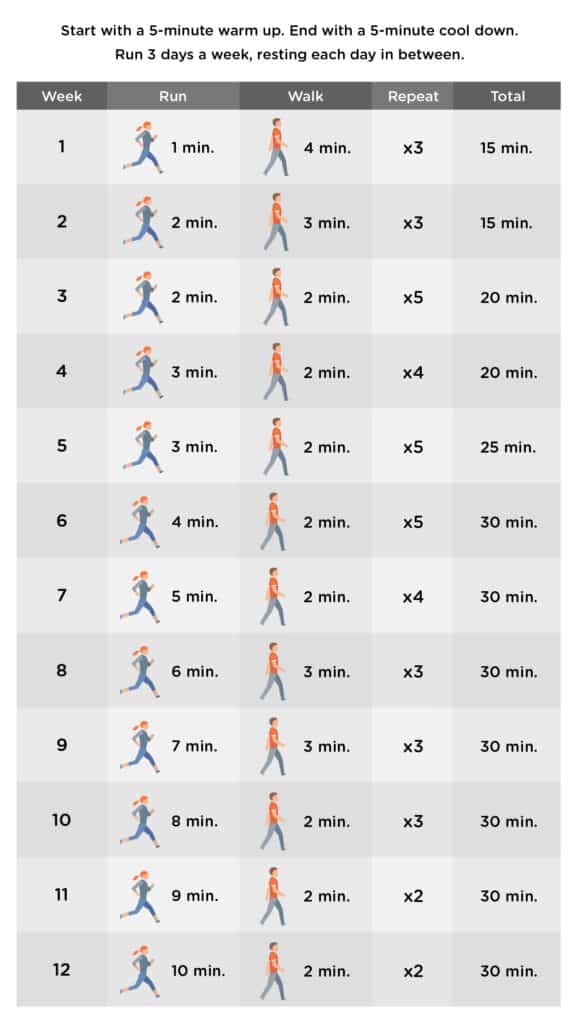Pacing. It’s so tempting to start out running too fast, and then after a few minutes, you’re done. Like, D.O.N.E. Done. And like we talked about above, if you find yourself struggling, slow down!
Some experts recommend a 3:2 or 4:3 breathing pattern (breathe in for 3 steps, out for 2 OR breathe in for 4 steps, out for 3), which not only balances out the impact of each step throughout your body, but counting those steps can actually keep your mind busy too.
The first 5 or so minutes will be tough. When you begin a cardio session, it takes your breathing a few minutes to catch up to the oxygen your body needs to keep doing that exercise somewhat comfortably (at least to the point that you’re not having a difficult time breathing), so that’s why pacing is so important!
And don’t be afraid to slow down things for a bit until you can breathe easier. You can always pick up your pace later.
Go for time, not distance. Some days running will go better than others, and if you’re always comparing your distance from one day to another, it can feel pretty depressing when you don’t go as far during your set running time. And we don’t need that!
So, unless you’re training for a PR for a race, run for time most of the time. If you want to know how far you’re running, maybe track your distance one day every week or two.
Cross train. Include resistance training, stretching, and other forms of cardio in your overall workout program. When you leave out one of these and/or run too many days a week, injuries (especially overuse injuries) can happen. Balance is the key to a happy life AND a happy running life.
Eat Healthy Foods. We often say, “Abs are made in the kitchen,” and the same is true for running: “Good—and even amazing—runs are made in the kitchen!”
You can find lots of nutrition programs with a simple Google search, and we recommend following one that A) doesn’t exclude any of the food groups, B) doesn’t recommend a super low daily calorie intake (1200 or less for women and 1500 or less for men), and C) includes a balance of protein, carbs, and fat—the macronutrients that are essential to healthy living, weight loss, and workout success.
Drink Your Water. We’ve said it a gazillion times before, and we’ll say it again: Drink your water! Aim for ½ your body weight in ounces every day, and even more on running days, especially when it’s hot and/or humid outside.
Learn more about the amazing benefits of water here.
Always Warm Up and Cool Down. Don’t forget to warm up for 5 minutes before running and cool down for 5 minutes after running. Be sure to include stretching in your warm up and cool down too!
Increasing Mileage. Once you finish your rookie program, don’t increase your TOTAL weekly mileage by more than 10% a week. So, if you’re running 10 miles a week, for example, then only increase your TOTAL weekly mileage by 1 mile. Increasing your mileage too quickly can lead to injuries.
Use an Interval App. The last thing you want to do when you‘re running is to be continually looking at your watch to see if you can walk yet. And just like a watched pot never boils, a watched watch moves VERY slowly.
There are free and very low-cost interval apps available that will tell you when it’s time to run or walk. If you like to listen to music or podcasts while you’re running, make sure the app you choose will work while your music/podcast is playing.


















